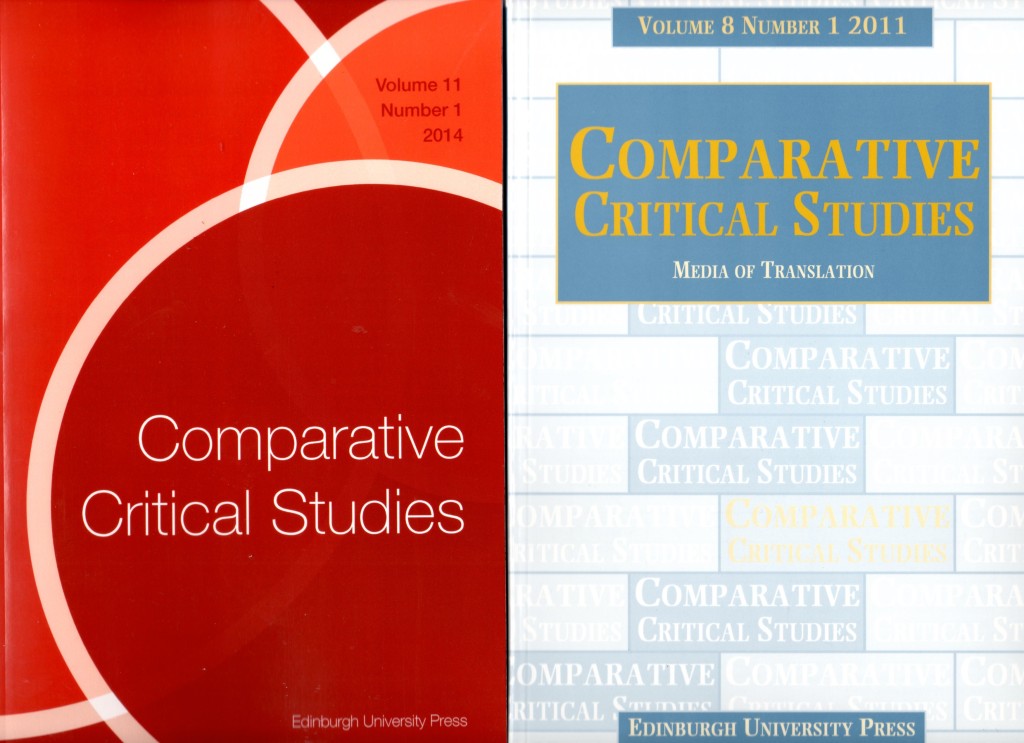The latest issue of the British Comparative Literature Association’s journal, Comparative Critical Studies, is out: Vol. 11, No. 1, red cover, eds. Maike Orgel and Glyn Hambrook. It contains excerpts from the 2013 John Dryden Translation Prizewinning pieces, including my rendition of Marcel Brion’s “La Capitana†from Les Escales de la haute nuit (Laffont, 1942). It was my first time working on Brion, though I’ve written on him at Weird Fiction Review.
Essayist, critic, novelist, and historian, Marcel Brion (1895–1984) wrote nearly a hundred books, ranging from historical biography to examinations of Italian and German art. Later in life, he turned to fiction, distinguishing himself in the domain of the fantastic. A regular contributor to La Revue des Deux Mondes and Les Nouvelles littéraires, Marcel Brion was for more than two decades also the foreign literature editor for Le Monde, where he brought Rainer Maria Rilke, James Joyce, and Dino Buzzati to the public eye. Brion was a member of the Academie Française, a knight of the Légion d’honneur, the Ordre national du Mérite, and the Ordre des Arts et des Lettres. His most memorable contributions to the field of the fantastique include the story collections Les Escales de la haute nuit (1942) and La chanson de l’oiseau étranger, and the novel La ville de sable. Here’s an excerpt:
It was an old house—noble, slightly decrepit—like most dwellings in that former Parlement town, where hardly a living thing was left save for great chestnut trees that renewed their youth in pink candelabra every spring, and fountains whose eternal voices sang the same joys and sorrows year upon year, century upon century. Sonorous, high-ceilinged rooms, somehow ardent and despondent at once, stirred up dreams and nostalgia. Close walls hemmed in a garden like a miniature jungle, choked with vague notions of escape. A house like that took possession of you as soon as you stepped over the doorsill. It inhabited you more than you it, filling you by turns with enthusiasm and gloom, depending on the path of the sun, the course of clouds, the sudden or furtive entrance of night. It presented one of those traps where the deceptive safety of an open door hid the impossibility of later turning back. It proffered a hook disguised a rose in a crystal vase, a ceiling with stucco volutes, shepherds playing instruments over the doors, acrobat monkeys tucked away in an alcove. The magic of the house was such that it made you forget the portion of time and space you belonged to, offering instead a lure of illusory infinity.
The last piece I had in Comparative Critical Studies was in the other issue pictured above, when I won the 2010 Dryden Prize for my translation of André Pieyre de Mandiargues’ story “The Red Loaf.†Mandiargues (1909-1991) was a French writer of the fantastic whose prolific output included poems, plays, essays, novels, and short stories. He also translated works by Yeats, Mishima, and Paz. Initially affiliated with Surrealism, he went on to be known for his flamboyant style and fascination with the erotic and macabre. His 1967 Goncourt-winning novel La marge was translated as The Margin (Calder & Boyars, 1969) by Richard Howard, and his novel La motocyclette (Gallimard, 1963) made into the film The Girl on a Motorcyle (1968) by Jack Cardiff.
Both these pieces were challenging to translate in similar ways: handling ornate prose styles that ranged from stately and classical (Brion) to idiosyncratic and outré (Mandiargues). I won’t excerpt the Mandiargues here, since it can be read in its entirety at Words Without Borders.

Leave a Reply